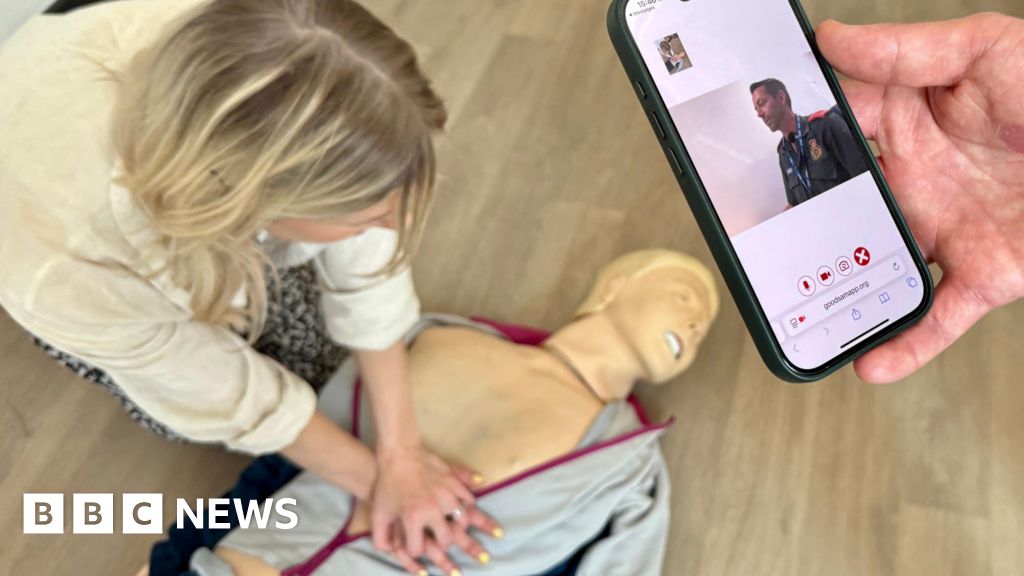BBC health correspondent, East of England
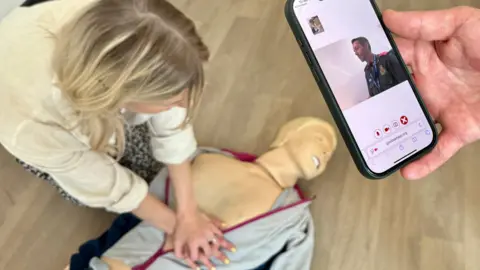 STEVE HUBBARD/BBC
STEVE HUBBARD/BBCPeople calling 999 in the East of England to report a cardiac arrest will be the first in the UK to be offered live video support from advanced paramedics.
During the call, staff in the East of England Ambulance Service Trust (EEAST) control room will coach them on cardiopulmonary resuscitation (CPR) via a video streaming platform.
It follows a successful trial in Denmark that improved the bystanders’ hand position and the speed and depth of compressions.
Resuscitation Council UK said when resuscitation was attempted following an out-of-hospital cardiac arrest, fewer than one in 10 people survived to hospital discharge and EEAST hopes the pilot will improve survival rates.
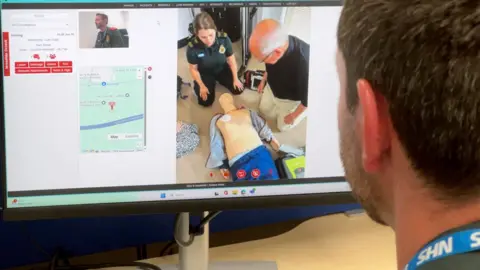 NIKKI FOX/BBC
NIKKI FOX/BBCLiam Sagi, an advanced paramedic, said survival had not “really changed in 40 years”.
EEAST serves Bedfordshire, Hertfordshire, Essex, Norfolk, Suffolk and Cambridgeshire.
It said it carried out resuscitation on 3,500 patients per year and its crews could restart more than 1,000 of the hearts of those patients, but that bystanders were crucial.
Starting resuscitation immediately could quadruple the chances of survival, according to the National Institute for Health and Care Excellence.
Mr Sagi said the public needed to know what to do.
“We know that less than half of the public have learnt CPR and for every minute that goes by without getting CPR, your chances of survival drop by 10%,” he said.
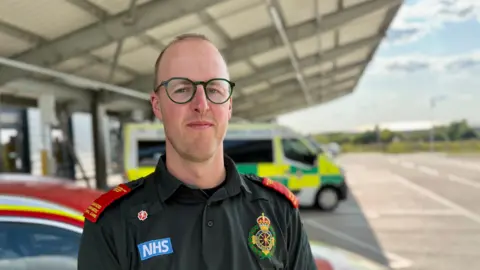 NIKKI FOX/BBC
NIKKI FOX/BBCBystanders do not need to download an app. During the 999 calls, paramedics send a text message to them via the GoodSAM video platform.
The caller clicks on a link within that message to initiate the video while they are still on the phone.
The caller and paramedic can see each other in the two-way video call.
EEAST said this allowed the paramedic to assess the situation visually and provide guidance on CPR technique until the ambulance service arrived.
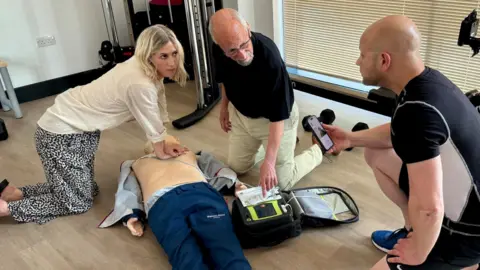 STEVE HUBBARD/BBC
STEVE HUBBARD/BBCMr Sagi said: “We know that our call handlers do a fantastic job of coaching people through CPR over the telephone but there are trials internationally that show we can really improve the quality of the CPR delivered.”
He said they would be looking at things like hand position and chest compression depth.
“We want to understand if this helps people in really traumatic situations. Does it help confidence? Does it help improve quality of CPR, and does it help the person process things after it’s happened?”
EEAST said video streaming worked best when there was more than one bystander present, so that one person could hold the phone while the other performed CPR.
It said success would depend on video connectivity and the person being familiar with video calls.
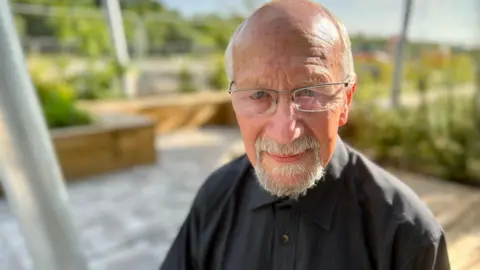 Nikki Fox/BBC
Nikki Fox/BBCJohn Newman, a community first responder from Epping, Essex, said: “Sometimes when we arrive, folk are so nervous they might hurt the person on the floor, they just stand back and watch apprehensively.
“If they’re already lying there, they’re already in a life-threatening situation, so they should just get on and do it.”
Essex and Herts Air Ambulance is helping to provide critical care paramedics for the scheme.
Dr Gareth Grier, associate medical director, said: “Every day we see cases where high quality CPR has made a life-changing difference to patients.
“This project will make sure that every patient gets the best chance of a good outcome.”
The project has been funded with the support of the East of England Ambulance Service Charity and a £142,000 grant from NHS Charities Together.
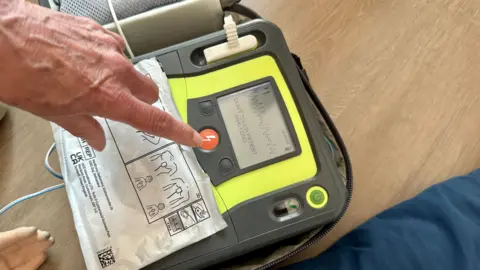 STEVE HUBBARD/BBC
STEVE HUBBARD/BBCThe video stream will also be used to coach bystanders on how to use defibrillators correctly.
Mr Newman said some people were “very apprehensive” about using one, but that the quicker they used it, the more likely they were to save a life.
“The video will overcome the apprehension right at the beginning,” he said.
“Our call handlers will tell you where the nearest defibrillator is. Someone else can go and get it, while you carry on with the chest compressions.”
The out-of-hospital cardiac arrest desk will run four days a week, from 07:00 to 19:00.


